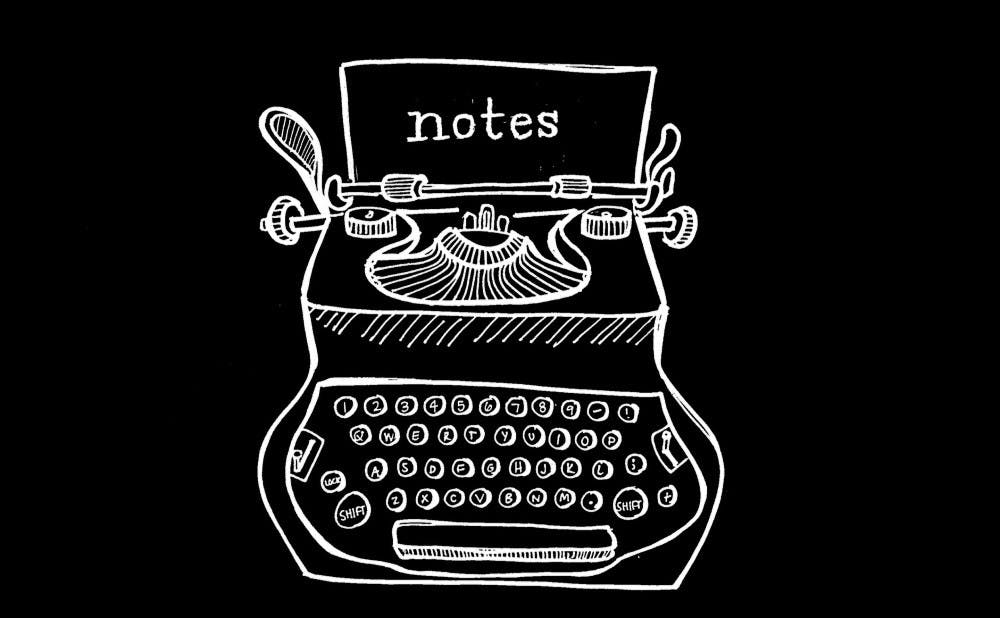There are 10 most commonly celebrated holidays in the United States — among those are of course Thanksgiving, Valentine’s Day and Christmas. They all boast their customary frivolities: turkeys, trees, chocolates — but never have I been excited by these marked dates. Perhaps it’s because my family hasn’t celebrated Christmas in nearly 10 years, or because I have an aversion to turkey or haven’t bothered with a significant other to exchange void proclamations of love.
Halloween has always been my holiday of choice. I always wore that preference proudly, noting it as a day dedicated to all things scary and strange — something that I never seemed to stop identifying with. With Halloween comes the hackneyed proclamation of “spooky season”’s arrival and a flood of tawdry, poorly executed costume parties, boasting more black cats and Batmans than I would ever care to see again. Instead, my fascination with Halloween lies in its lore: the enchanting and otherworldly mythology of witches, ghouls and things that go bump in the night.
Coupled with the fall season, Halloween brings on a pleasant isolation. The melancholic air of the holiday is somehow invigorating. In a sense, the holiday presents a staggering reminder of our own mortality. Rooted in pagan practice and Dia de Los Muertos, Halloween blurs the boundaries between the living and spirit realms, and was traditionally viewed as an opportunity to find comfort in the spirits of lost friends and relatives. The idea that life extends past the living is a comfort to many. For me, my fear lies in the uncertainty of how that life — if one exists — will compare. Representations of the spirit world are often bleak and typically denote a limbo state between being truly living or truly dead. They say life is for the living, so to continue life after death erases its perceived finality.
My most vivid Halloween memories were reading fearsome classics by the likes of Poe, Irving and Wilde. The legendary chase between the headless horseman and Ichabod Crane in “The Legend of Sleepy Hollow,” still summons a fear of being alone at night, and the fatal personification of Dorian Gray’s vanity in “The Picture of Dorian Gray” remains the most chilling tale I’ve encountered.
Halloween conjures recollections of my inventive imagination as a child. On the periphery of my elementary school playground, there was an especially gnarled tree with dark brown bark, fenced off and easily distinguishable from the rest. My classmates and I dubbed it “the witch tree” by consequence of its protruding nose-like trunk. We fabricated an entire legend, that the tree was only a tree by day, and a witch by night. We imagined that the witch was always watching the kindergarteners and plotting which one to claim next.
In truth, I scare easily. Although ghost stories were the root of my nightmares, I couldn’t help but to devour every book in the “Scary Stories to Tell in the Dark” canon. Ghosts were my primary fear and I was paralyzed by the thought of having to sleep in complete darkness. So it’s clear that I do not have a particular fondness for being frightened, but my fascination with Halloween remained unwavering.
There’s no doubt that dressing Halloween’s foremost discernable characteristic. “Scary” costumes were traditionally worn to ward off demonic spirits, and although the mass-produced and commodified costumes of today bear little resemblance to the deeply disturbing costumes of old, they remain an unequivocal aspect of the holiday. That isn’t to mention the racially and culturally insensitive costumes that somehow to continue to circulate despite every indication of their tackiness.
I’ve gone through every archetypal costume imaginable. My mother started me off relatively tame, opting for a pumpkin costume for my very first Halloween. That progressed into becoming a witch, then a pirate and, of course, a vampire. The culmination of my impersonations was Alex Delarge from “A Clockwork Orange” in my senior year of high school (my friends opted for a football player and Minnie Mouse, so you can imagine how ill-matched we were).
But our fascination with impersonation and imitation highlight Halloween’s duality. Not only in exploring the dichotomies of the living and the dead, but also in ourselves — how we internalize or empathize with who we decide to become and how we distinguish the self from the other. Our preoccupation with pastiche, idealism and fantasy are inevitably reflected in our choice of disguise, but at what other time of year can we break free from the confines of mediocrity?
Halloween will likely remain my favorite holiday for the foreseeable future. For me, the season’s allure lies in its mystery — the uncertainty in what lies beyond the mortal world and an acknowledgement of the physical manifestations of “good” and “evil.” Each year I look forward to the hair-raising revelry of Halloween and I imagine this year will be no different.
Sarah Derris is a Trinity sophomore and Recess managing editor.
Get The Chronicle straight to your inbox
Signup for our weekly newsletter. Cancel at any time.

